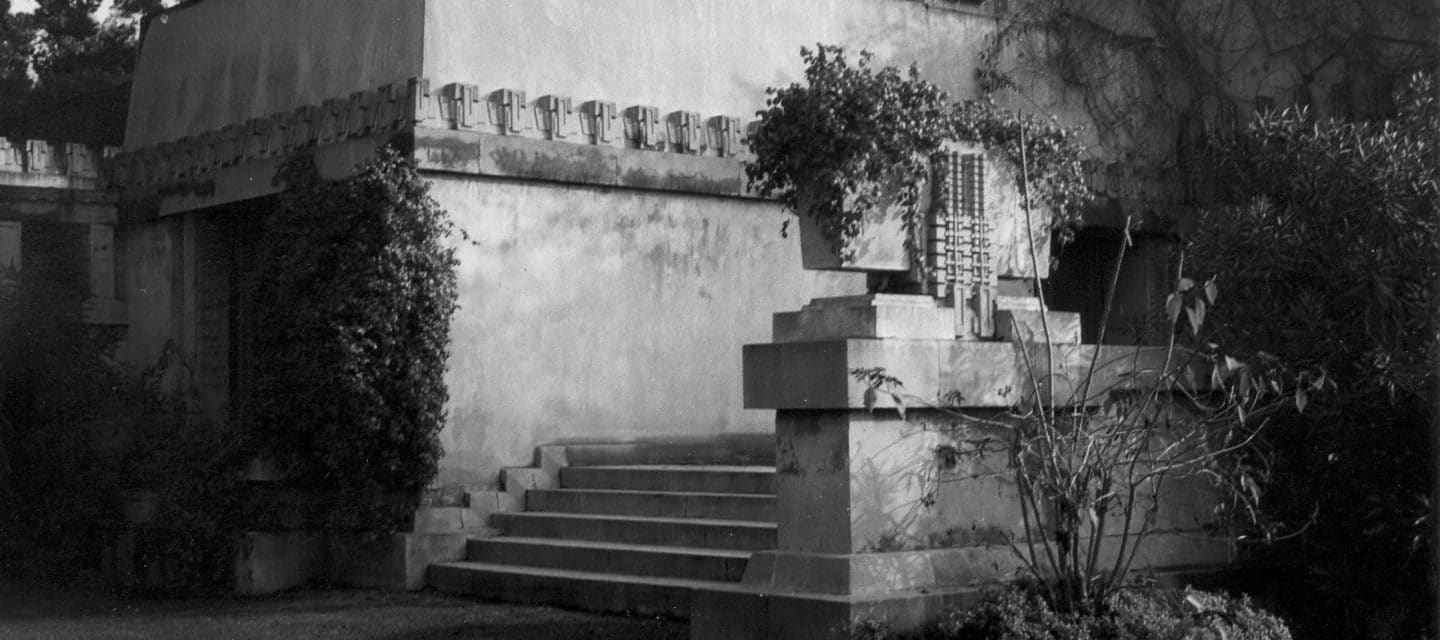
Hollyhock House
Perched on a 36-acre hilltop in East Hollywood, Wright’s first and most widely known West Coast design defies stylistic categorization.
Variously described as Mayan, Aztec, Asian, Egyptian, and as a “California Romanza” by the architect himself, the Hollyhock House was a transitional structure for Wright. The building bridges the Prairie style of the preceding decades and his textile block structures of the 1920s. Wright’s client, Aline Barnsdall, was the heir of one of the largest independent oil producers in the United States. A fiercely independent feminist who was immersed in the world of experimental theater, Aline flouted convention, first approaching Wright at the height of his personal scandals. Though Barnsdall initially envisioned an elaborate complex of residences, theaters, and shops to serve an avant-garde theater community, financial and artistic differences meant that the Hollyhock House and two secondary residences were the only buildings constructed.
Barnsdall’s request for a residence that was half house and half garden inspired the numerous terraces, colonnades and pergolas that join the Hollyhock House’s interior and exterior spaces. A series of rooftop terraces takes advantage of the temperate climate, providing magnificent views of the Los Angeles basin and the Hollywood Hills. Stylized hollyhocks, Barnsdall’s favorite flower, appear on roof finials, furniture, art glass windows, and the ornamental bands of cast-concrete on the structure’s exterior. With seventeen rooms and seven bathrooms, the massive residence was ultimately not what Barnsdall wanted. Indeed, her dislike of the Hollyhock House was such that she decided not to complete the artists’ colony. In 1923, she offered the Hollyhock House and 11 acres of her property to Los Angeles to serve as a public library and park. The city initially rejected her offer, but in 1927 changed its mind and accepted the land and its buildings for an art park dedicated to the memory of Aline’s father, Theodore Barnsdall.





